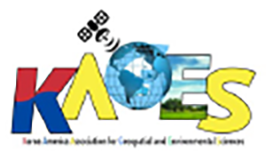Abstract
The purpose of this research is to advance K-12 geospatial learning by investigating the methods (traditional paper versus digital technology) best suited for delivering content that improves spatial thinking skills. This research was designed to investigate whether instruction through different media, among other variables such as attitudes toward geography and technology, past travel experience, and demographic variables have an effect on the development of spatial thinking skills. Specifically, it examines traditional, paper aerial imagery as compared to digital imagery visualized with 3-D globes. Findings confirm that students taught by both paper and digital media showed improvement in spatial thinking skills with the advantage contingent on different skills being assessed. A subset of students were invited to share their opinions about the activities in order to develop a richer understanding of their experiences. This paper focuses on the qualitative results of the study by analyzing interview data from participating students and teachers.
Recommended Citation
Collins, Larianne
(2018)
"Student and Teacher Response to Use of Different Media in Spatial Thinking Skill Development,"
International Journal of Geospatial and Environmental Research: Vol. 5:
No.
3, Article 3.
Available at:
https://dc.uwm.edu/ijger/vol5/iss3/3

